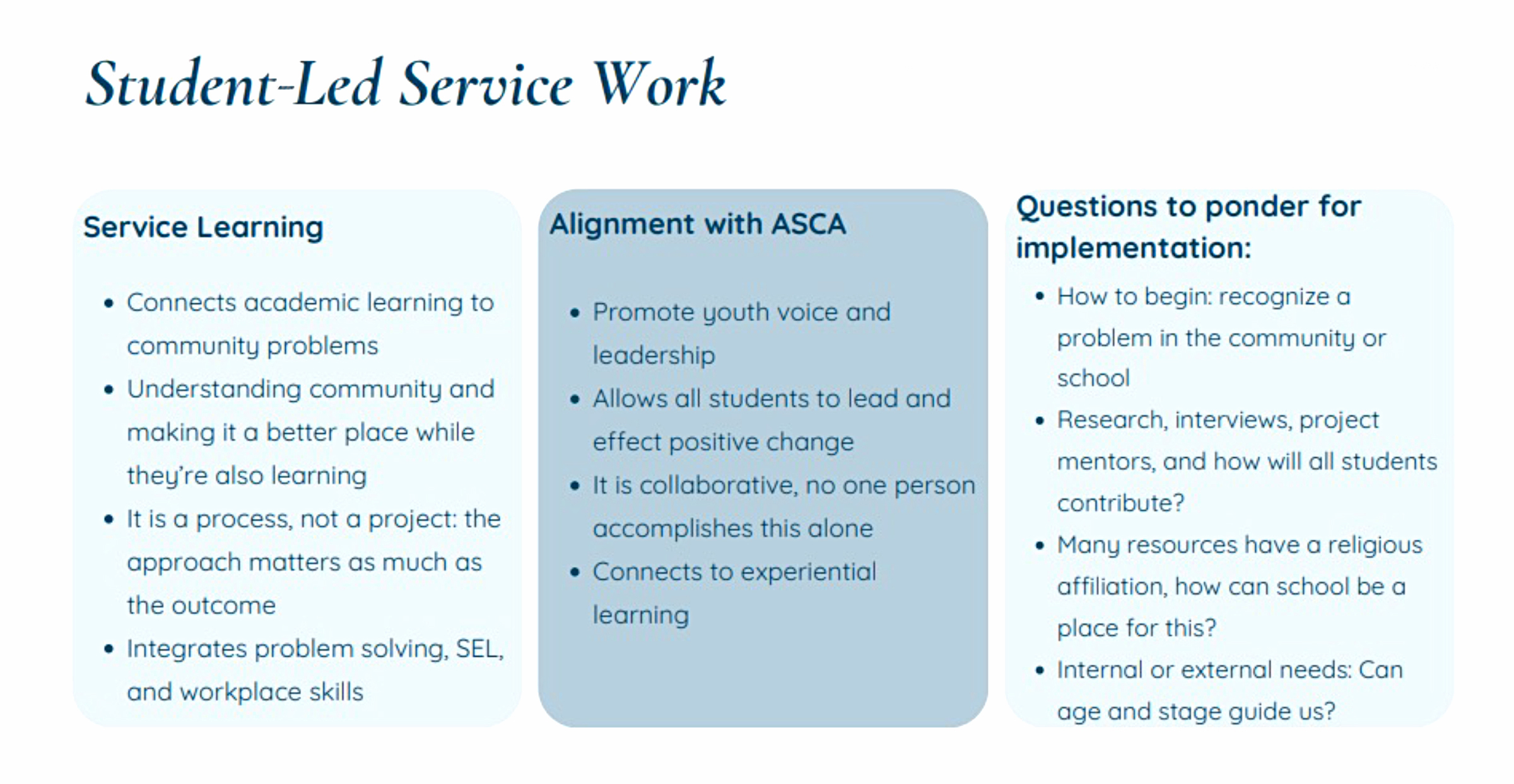Every Student Can Be a Leader
Student councils and service projects can offer every child the opportunity to make a difference.
Topics: Student Engagement
Leadership is often defined as the ability to influence and guide a group of people toward a common goal. Under that definition, the only difference between student leadership and adult leadership is the age of the leader. Regardless of age, leaders need to be taught leadership skills, practice those skills, and most importantly, have the opportunity to implement those skills in real-life situations.
Student council is a vehicle that can provide such opportunities for students. For many, student council might be the first time they have been given a voice in the school’s decision-making process and their initial exposure to service projects. Our belief is that student leaders become adult leaders, and our hope is that a student council can represent the beginning of a leadership journey that puts students on the path to future leadership opportunities.
Perspectives on Leadership
Students who see themselves as leaders are more likely to participate in school activities and feel a sense of ownership over their learning. This sense of agency often translates into improved attendance, stronger classroom participation, and a deeper connection to school and community.
While the concept of student leadership is often associated with traditional student councils, there are numerous models that schools can adopt to cultivate leadership in diverse, inclusive, and developmentally appropriate ways. The models vary in structure and purpose, but all serve a common goal: empowering students to take an active role in shaping their school communities (Fig. 1).
Figure 1:

Traditional student councils feature elected representatives who work collaboratively to influence school culture, complete projects, and organize events. Other models emphasize peer leadership and mentoring and might have students participate as ambassadors or in focus groups to build their service skill sets. But all students have the capacity to contribute to their school, no matter their age or personality.
A Spectrum of Service
The spectrum of student service projects can vary greatly (Fig. 2). In an elementary school, the concept of a service project might surround education about a need and a fundraising drive—learning about the need for funding at a local animal shelter, for example, and spearheading the collection of funds to be donated. That effort might lead to a food drive for a local food pantry or homeless shelter.
Figure 2:

As students grow older, community service projects might take the shape of a park cleanup, a visit to a care facility, or a partnership with an established community service organization. The most advanced activity for a student council is to create a project based on a need that has not yet been addressed.
A Structured Pathway
In elementary and middle schools, student leadership is more than a title or a position. While student councils are a familiar format, developmentally appropriate models give young learners the chance to lead, contribute, and make their voices heard.
A continuum of student leadership opportunities can help schools progressively build student skills in civic responsibility, empathy, and problem-solving. If you believe that all children—regardless of age—have the potential to use their voices and really see the world around them, you can create experiences, offer opportunities for authentic collaboration and communication, and create change and betterment.
At the heart of effective student leadership is the belief that every child is a potential leader. Students who engage in service learning not only contribute meaningfully to their community, but also gain a valuable and deep understanding of their own ability to make a difference.
Leadership isn’t limited to a select few who speak the loudest or get the highest grades; it is also found in the quiet helper, the creative problem-solver, the kind encourager, and the curious question-asker. By recognizing and nurturing the unique strengths of each student, educators create an environment in which all children can lead in ways that reflect their personalities and passions.
When schools seek out and encourage diverse expressions of leadership, they send a powerful message: that leadership is about making a positive difference, and that every child has the capacity to make that difference.
Jon Wennstrom is principal of Riley Upper Elementary School in Livonia, Michigan.
Heather Wolf is principal of George Washington Elementary School in Kingsport, Tennessee.

